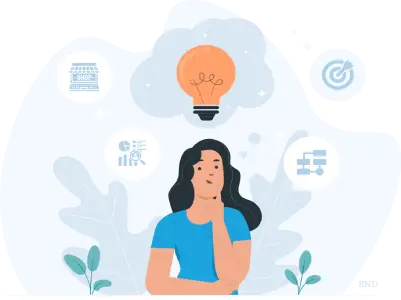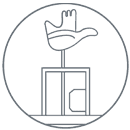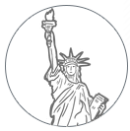Top 30 Web Designing Interview Questions for Fresher and experienced professionals

Table of Contents
Whether you’re a fresher or an experienced professional, mastering web design concepts is crucial in today’s competitive job market. To help you ace your interview, we have curated a comprehensive list of the top 30 web designing interview questions. These questions cover a wide range of topics, from design principles to coding techniques, and are designed to assess your skills and knowledge in the field. Whether you’ve completed a web design training course or gained hands-on experience, this resource will boost your confidence and enhance your chances of landing your dream job.
Here is the list of 30 Important Web designing interview questions and answers for freshers as well as experienced professionals:
1. What is web design and why is it important in today’s digital age?
Answer: Web design is the process of creating the visual and interactive elements of a website. In today’s digital age, web design is important because it plays a crucial role in attracting and engaging users, enhancing user experience, and conveying the brand message effectively.
2. What are the key principles of good web design?
Answer: The key principles of good web design include:
Visual appeal: A visually appealing design attracts and retains users.
User experience (UX): Designing with a focus on usability and ease of navigation.
Consistency: Maintaining consistent design elements throughout the website.
Mobile responsiveness: Designing websites that work well on different devices.
Clarity and simplicity: Making the design intuitive and easy to understand.
Accessibility: Designing websites that are inclusive and usable by everyone.
3. Explain the difference between UX (User Experience) and UI (User Interface) design.
Answer: User Experience (UX) design focuses on enhancing the overall experience of users by making websites intuitive, efficient, and enjoyable to use. User Interface (UI) design, on the other hand, deals with the visual and interactive elements that users interact with, such as buttons, menus, and forms.
4. What is a responsive web design, and why is it important?
Answer: Responsive web design is an approach that ensures websites adapt and display properly on different devices and screen sizes. It is important because it provides an optimal viewing experience, improves usability, and helps reach a wider audience across various devices, including smartphones, tablets, and desktops.
5. Can you explain the box model in CSS?
Answer: The box model in CSS defines how elements are displayed and structured. It consists of four components: content, padding, border, and margin. The content is the actual content of the element, padding adds space around the content, the border surrounds the padding, and the margin creates space between the element and other elements on the page.
6. What are the advantages of utilizing CSS preprocessors such as Sass or Less?
Answer: CSS preprocessors like Sass or Less offer several benefits:
Variables: They allow reusing values throughout the stylesheet, making it easier to maintain and update.
Nesting: It enables nesting CSS selectors, resulting in cleaner and more organized code.
Mixins: Preprocessors allow defining of reusable styles or mixins that can be included in multiple selectors.
Modularity: Preprocessors enable breaking down stylesheets into modular components, making them more manageable.
Functions: They provide additional functionality by allowing calculations and operations within the stylesheet.
7. How do you optimize web graphics for better performance?
Answer: To optimize web graphics, you can follow these techniques:
- Choose the appropriate file format (e.g., JPEG for photographs, PNG for images with transparency).
- Compress images without sacrificing quality using tools like ImageOptim or TinyPNG.
- Specify image dimensions to prevent the browser from resizing the images.
- Use CSS sprites to combine multiple images into a single file, reducing the number of server requests.
- Lazy load images to load them only when they become visible on the screen.
8. What is the role of wireframes and mockups in the web design process?
Answer: Wireframes and mockups play a crucial role in the web design process as they provide a visual representation and structure for the website before the actual development stage.
9. What is the difference between inline, block, and inline-block elements?
Answer: Inline elements are displayed within a line of text, while block elements take up an entire row and create a line break before and after the element. Inline-block elements are similar to block elements but can be placed within a line of text.
10. Explain the concept of CSS specificity and how it affects the style hierarchy.
Answer: CSS specificity determines which styles will be applied to an element when there are conflicting rules. It is determined by the number of selectors used to style an element, with a higher specificity value overriding a lower one. For example, an ID selector has a higher specificity value than a class selector.
Ready to get started? Take your business to next level with Sensation Solutions Today
Let’s Discuss your Project
11. How do you handle cross-browser compatibility issues during web design?
Answer: Cross-browser compatibility issues can be addressed by testing a website on different browsers and devices, using CSS and JavaScript libraries that have been tested for compatibility, and using fallbacks or alternative methods for unsupported features.
12. What are the best practices for optimizing website performance?
Answer: Best practices for optimizing website performance include reducing image file sizes, minimizing HTTP requests, using caching and compression, minimizing JavaScript and CSS files, and optimizing server response times.
13. Can you explain the concept of progressive enhancement in web design?
Answer: Progressive enhancement is an approach that starts with a basic functional website and progressively adds more advanced features or styles for users with modern browsers or devices. It ensures that all users can access essential content and functionality.
14. Explain the concept of “above the fold” and its significance in web design.
Answer: “Above the fold” refers to the portion of a webpage that is visible without scrolling. It holds crucial content and elements that immediately capture users’ attention. Designing this area effectively is vital as it influences user engagement, and first impressions, and encourages further exploration of the website’s content.
15. How do you incorporate animations and transitions in web design, and what tools or libraries do you use?
Answer: I incorporate animations and transitions using CSS3 properties like transition, animation, and keyframes. I also utilize CSS animation libraries like Animate.css or GSAP (GreenSock Animation Platform) for more complex animations. Additionally, I leverage JavaScript libraries like jQuery or React for interactivity and dynamic animations.
16. What are some best practices for organizing and structuring CSS code in large-scale projects?
Answer: In large-scale projects, I follow modular CSS architecture like BEM (Block, Element, Modifier) or SMACSS (Scalable and Modular Architecture for CSS). I use a preprocessor like Sass or Less to write reusable and maintainable CSS code, and leverage techniques like component-based styling, keeping styles in separate files and utilizing naming conventions for clarity and consistency.
17. How do you optimize website performance in terms of page load speed and overall user experience?
Answer: To optimize website performance, I utilize techniques like minifying CSS and JavaScript files, optimizing image sizes and formats, utilizing browser caching, and reducing server response time. I also prioritize performance by utilizing a content delivery network (CDN), enabling gzip compression, and deferring the loading of non-critical resources.
18. How do you approach designing a user-centric website that prioritizes usability and accessibility?
Answer: To create a user-centric website, I start by conducting user research and creating user personas. I then focus on designing an intuitive information architecture, clear navigation, and consistent user interface patterns. Accessibility is prioritized by following WCAG guidelines, using proper semantic HTML, providing alternative text for images, and ensuring keyboard navigation.
19. How do you approach designing websites that are optimized for conversion and lead generation?
Answer: To optimize a website for conversion and lead generation, we should use clear calls to action, reduce form fields, use social proof like customer testimonials, and use A/B testing to improve the website’s effectiveness over time.
20. Explain the difference between serif and sans-serif fonts and when to use each.
Answer: Serif fonts have small decorative lines at the ends of characters, conveying a more traditional and formal feel. Sans-serif fonts, without these lines, have a modern and clean appearance. Use serif fonts for print, formal documents, and body text. Use sans-serif fonts for digital content, headings, and modern designs.
Ready to get started? Take your business to next level with Sensation Solutions Today
Let’s Discuss your Project
21. How do you approach designing websites that are secure and protected against cyber threats?
Answer: To ensure website security, we should use strong passwords, implement SSL encryption, use security plugins, and keep all software up to date with the latest security patches. We should also use a website firewall and perform regular security audits.
22. How do you approach designing websites that are easy to maintain and update?
Answer: To ensure that a website is easy to maintain and update, we should use a modular design approach with reusable components. We should also use a content management system (CMS) like WordPress or Drupal to make it easy to update content and make changes to the website.
23. What is your approach to designing user-friendly navigation menus?
Answer: A user-friendly navigation menu should be simple and intuitive, with clear labels that describe the page’s content. It should also be easy to find and consistent across the website. We can also use dropdown menus, breadcrumbs, and search functionality to enhance the navigation experience.
24. Can you describe the process of converting a Photoshop design to a working website?
Answer: Converting a Photoshop design to a working website involves several steps. First, slice the design into individual images. Then, write HTML/CSS code to structure and style the webpage. Add interactivity using JavaScript. Optimize assets and ensure responsiveness. Finally, test and deploy the website.
25. Explain the concept of color theory and its importance in web design.
Answer: Color theory is the study of how colors interact and affect human perception and emotions. In web design, color theory is vital as it influences the visual appeal, user experience, and communication of a website. Proper color selection enhances usability, evokes desired emotions, improves readability, and creates a cohesive and visually pleasing design.
26. How do you ensure that your web designs are accessible for users with disabilities?
Answer: To ensure web accessibility, we need to follow web content accessibility guidelines (WCAG). This involves adding alt tags for images, using proper HTML semantics, ensuring keyboard accessibility, providing transcripts and captions for multimedia content, using high-contrast colors, and avoiding the use of flashing or blinking content.
27. How do you incorporate storytelling into your web design?
Answer: Storytelling in web design involves creating a narrative that guides users through the website and engages them emotionally. I achieve this by using visuals, typography, and content to tell a cohesive story. I carefully consider the sequencing of the information and employ interactive elements to create a compelling and memorable user experience.
28. How do you handle browser compatibility issues, particularly with older versions of Internet Explorer?
Answer: I adopt progressive enhancement techniques and use feature detection to handle browser compatibility issues. I ensure that the core functionality and content are accessible to all users regardless of the browser they are using. For older versions of Internet Explorer, I may use polyfills or graceful degradation techniques to provide a functional experience while gracefully handling any limitations.
29. Can you explain the concept of mobile-first design and its benefits?
Answer: Mobile-first design is an approach where the design process starts with designing for mobile devices before scaling up to larger screens. This approach ensures a focus on essential content and smooth user experiences on smaller screens. The benefits include faster load times, improved performance, better SEO rankings, and a user-centric design that adapts well to various devices.
30. Can you describe the process of user testing and how it improves web design?
Answer: User testing involves observing individuals as they interact with a website or prototype to gather feedback on its usability and user experience. The process typically includes defining test objectives, selecting participants, creating test scenarios, conducting the sessions, and analyzing the results. User testing improves web design by identifying usability issues, validating design choices, uncovering user preferences, and providing actionable insights. It helps designers make informed decisions, refine interfaces, enhance user satisfaction, and create more intuitive and effective websites that meet users’ needs and expectations.
In conclusion, mastering the top 30 web designing interview questions is a valuable asset for both fresher and experienced professionals in the field. It not only demonstrates your expertise but also enhances your chances of success in job interviews. If you’re considering acquiring these skills or looking to enhance your existing knowledge, consider enrolling in a web design training course. Sensation Solutions Training offers comprehensive courses that cover the fundamentals and advanced concepts of web design. By joining their program, you can further sharpen your skills and gain the confidence to excel in your web design career.







